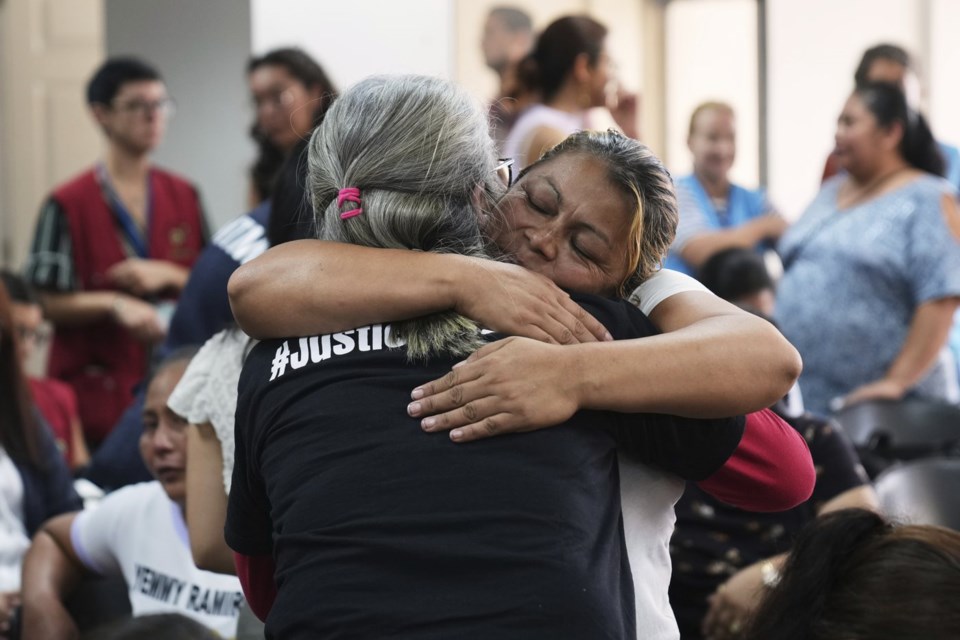GUATEMALA CITY (AP) — A Guatemalan judge on Tuesday convicted six former officials in connection with the deaths of 41 girls in a 2017 fire at a facility for at-risk youth that had a history of abuse. The six had all pleaded not guilty.
Judge Ingrid Cifuentes handed down cumulative sentences of between six years and 25 years for charges ranging from manslaughter to abuse of authority. She also ordered the investigation of former President Jimmy Morales for his role in ordering police to work at the facility housing minors who had not committed any crimes.
Prosecutors had requested sentences of up to 131 years for some of the suspects, who were all former government workers, including several whose duties included protecting children.
Emily del Cid Linares, 25, a survivor of the fire who suffered burns, said she was satisfied with the verdict.
“I feel like a weight has been lifted from me,” she said. “What I most feel is that they (the victims) will be able to rest in peace. (Those responsible) are going to pay for what they did.”
Former Social Welfare Secretary Carlos Rodas was sentenced to 25 years in prison.
Earlier, Rodas told those gathered in the courtroom, including relatives of the victims, that he had not caused “any harm to their daughters and the survivors.”
Also among those convicted was ex-police officer Lucinda Marroquín, who held the key to the room where the girls were locked up and didn’t open it when the fire started. She was sentenced to 13 years.
The judge said that through phone records, investigators were able to establish that at the time of the fire, Marroquín was talking on her phone and when told about the blaze, a witness testified that she responded with profanity and said “let them burn.”
A former government prosecutor assigned to the protection of children was acquitted.
On March 8, 2017, a girl at the Virgen de la Asuncion Safe Home — located 14 miles (22 kilometers) east of Guatemala City — lit a foam mattress on fire in the room where a group of girls had been locked up for hours without access to a bathroom. Smoke and flames quickly filled the room, killing 41 girls and injuring 15.
About 700 children — no one had exact numbers — lived at the facility, which had a maximum capacity for 500. The majority had committed no crime. They were sent there by the courts for various reasons — they had run away or were abused, or were migrants.
The night before the fire, a group of girls had escaped. Hours later, the police returned them to the home. They were locked in a room that had no access to a bathroom and guarded by police. They were given foam mattresses to sleep on.
After hours of demanding to be let out, one girl lit the fire.
Cifuentes said that the fire was the culmination of a series of abuses, some of which had been reported to authorities, but not acted on. She said autopsies confirmed the presence of drugs in some of the girls, which supported their complaints that they were given sleeping pills. The pills were among the reasons they had tried to escape the facility.
___
Follow AP’s coverage of Latin America and the Caribbean at https://apnews.com/hub/latin-america
Sonia Pérez D., The Associated Press


